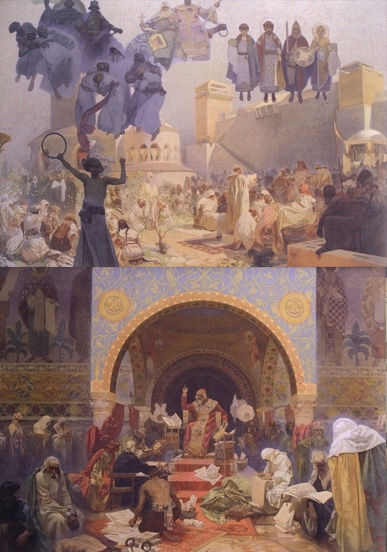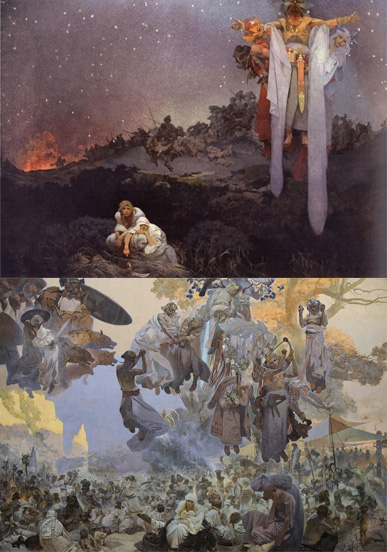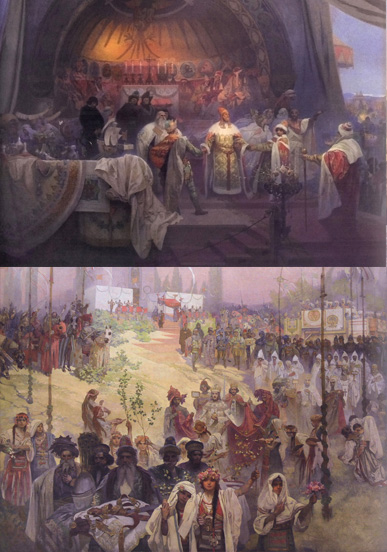SLAV EPIC | 20 CYCLES
The Slav Epic (Slovanská epopej) is a series of twenty monumental canvases (the largest measuring over 6 by 8 metres) depicting the history of the Slav people and civilisation. Mucha conceived it as a monument for all the Slavonic peoples and he devoted the latter half of his artistic career to the realisation of this work.
The idea of the work was formed in 1899, while Mucha was working on the design for the interior of the Pavilion of Bosnia-Herzegovina, which had been commissioned by the Austro-Hungarian government for the Paris Exhibition of 1900. In preparation for the assignment he travelled widely through the Balkans, researching their history and customs as well as observing the lives of the Southern Slavs in the regions that had been annexed by Austria-Hungary two decades earlier.
From this experience sprang the inspiration for a new project – the creation of ‘an epic for all the Slavonic peoples’ that would portray the ‘joys and sorrows’ of his own nation and those of all the other Slavs.
[The Slav Epic] has twenty paintings, ten on Czech subjects, ten on broader Slavic themes.
The first depicts "The Slavs in Their Original Homeland . . ." and carries the subtitle "Between the Knout of the Turks and the Sword of the Goths." The last is "The Apotheosis of the History of the Slavs." In between this somber beginning and translucent ending, Mucha paints an odyssey that runs from paganism through "The Introduction of the Slavonic Liturgy (Praise God in Thy Native Tongue)" . . . to "The Abolition of Serfdom in Russia, 1861. . . ." He depicts the Bulgarian czar Simeon (888-927), the coronation of the Serbian czar Stephen Dushan (1346), and the defense of Sziget against the Turks by the Croatian hero Nicholas Zrinsky (1566). But it is his choice of Czech subjects which is most interesting. Six of the canvases are on broadly Hussite themes ("Jan Milic of Kromeriz 1372," "Master Jan Hus Treaching in the Bethlehem Chapel 1412," "The Meeting at Krizky 1419," "After the Battle of Vitkov 1420," "Petr Chelcicky at Vodnany 1433," and "The Hussite King Jiri z Podebrad 1462"). Two more ("The Printing of the Kralicka Bible at Ivancice 1578" and "Jan Amos Komensky--Last Days in Naarden 1670") invoke the legacy of the Union of Brethren and the tragedy of Czech Protestant exiles after [the Battle of White Mountain]. Premysl Otakar II, perhaps the most famous the Premyslid kings, is also included for "Unity of the Slav Dynasties 1261." (Sayer 152)


